Itinerary: Tairāwhiti Gisborne city guide
Julia Gatley takes us around locations of architectural significance and interest in the region she grew up in – the country's eastern port – for this month's Itinerary, supported by Dulux Colours of New Zealand.
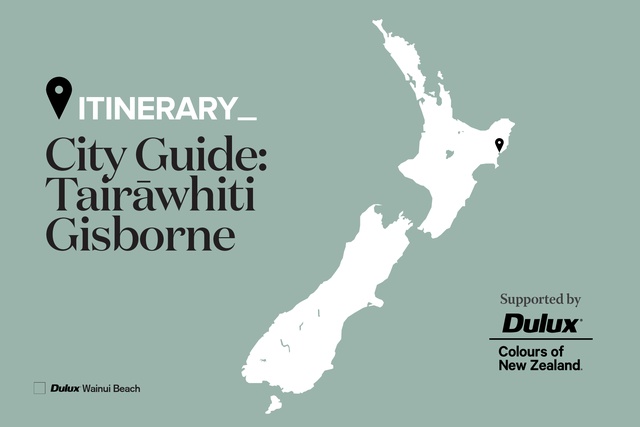
Growing up in Gisborne in the 1970s, I benefited from the work of Monty Glengarry, Jock Corson and Colin Pilbrow. This included living in a house designed by the practice – the W. Thorpe House (1968–1969). In addition, the H. B. Williams Memorial Library, with its swooping roof, was always wonderful, the Gisborne Museum and Arts Centre was an exciting new arrival in 1977, and Jock and Robin Corson were family friends; I liked their house, too. Today, my brother Adam is project manager at Glengarry, Corson and Pilbrow’s successor practice, Architects 44.
Historically, the Tairāwhiti Gisborne area was known as Tūranga. It was the landing place for significant voyaging waka from the Pacific and Māori have lived there since the 14th century. Three tidal rivers encouraged their settlement; the Taruheru and Waimata join to form the Tūranganui, reputedly the shortest river in the southern hemisphere.
Captain James Cook and his crew on the Endeavour made their first New Zealand landfall near the river mouth in October 1769. Cook’s crew shot and killed up to nine Māori and he bestowed the name Poverty Bay on the place as if to suggest it had nothing to offer him. In his wake, Pākehā settlers set up trading stations from the 1830s. The town area was then set out in 1870. It was given the name Gisborne at this time, after the colonial secretary, William Gisborne.
It grew rapidly in the late 19th and early 20th centuries. Its rural economy benefited from the increased use of refrigeration for meat exports. The CBD retains several clusters of two- and three-storey classical commercial buildings from the first decades of the 20th century, many of them designed by the local practice of Burr & Mirfield. After World War II, horticultural industries expanded. Wattie’s had a big cannery in the city from 1952, on the west bank of the Tūranganui River. It closed in the late 1990s. Much of that site has been rebuilt with hotels and apartments. The region is still important for food production and wineries abound.
Gisborne has a population of some 37,000 people, of which 54 per cent identify as Māori. There are multiple local iwi. Sir Āpirana Ngata was a particularly influential member of Ngāti Porou. As MP for Eastern Māori from 1905 to 1943, he worked to improve conditions for Māori and to strengthen communities and culture. This included encouraging the revival of traditional Māori arts and crafts, thus influencing the design of marae buildings and Māori churches.
With its eastern location, Gisborne is the first city in the world to see the sun rise each day. This makes it an important gathering place for events of a temporal nature, such as the sesquicentennial of 1990 and the turn of the millennium. Given its associations with Cook, it is also centre stage on anniversaries of his arrival, notably the bicentenary in 1969 and Tuia 250 in 2019. To mark the bicentenary, two wooden models of the Endeavour, each nearly three metres in length, were raised on poles above the city’s main thoroughfare, Gladstone Road. Damaged and increasingly precarious, they were taken down in 2016. The plan was to rebuild them but public opposition put a halt to this. Events for Tuia 250 were quite different, acknowledging Pacific voyaging more broadly and highlighting not only Cook but also the Tahitian chief and navigator Tupaia, who sailed on the Endeavour and mediated between the crew and Māori. In 2019, too, Gisborne launched its Tupapa Heritage Trail, telling the history of local iwi around the waterfront and Titirangi (Kaitī Hill), and the Geographic Board approved the dual name, Tūranganui-a-Kiwa/Poverty Bay.
This guide highlights non-residential buildings. The city also has many good houses, by both local architects and out-of-towners, including Cecil Wood and Charles Tilleard Natusch in the early 20th century, Roger Walker in the 1980s and, more recently, Pete Bossley, Jeremy Salmond and Jeremy Smith. A walk down Russell and Clifford Streets reveals plenty of interesting houses.
THE ITINERARY
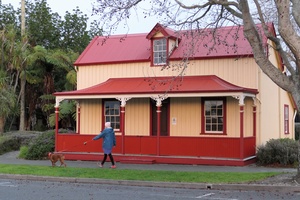
01. 1872; relocated 1886 – Wyllie Cottage
14 Stout Street, built by John Forbes
Owned by the Tairāwhiti Museum, Wyllie Cottage is Gisborne’s oldest extant European house and is open to the public. It is balloon-framed and built of kauri, with mortise-and-tenon joints. It was moved to its current site in 1886. Local support saved it from demolition in the 1970s. Salmond Reed Architects restored it to its 1886 appearance in 2016. Next door is Lysnar House (1886), in which the museum operated from 1955. Its ballroom, built for Lysnar’s daughter’s 19th birthday party, was relocated to the city’s marina in 1975 and turned into a restaurant. See tairawhitimuseum.org.nz
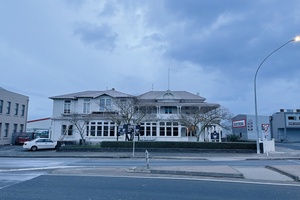
02. 1898 – Poverty Bay Club
38 Childers Road/53 Customhouse Street, by William P. Finneran
The Poverty Bay Club was formed in 1874 as a private club for the city’s landowners, farmers, city councillors and businessmen, complete with a billiard room, card room, meeting room and bar. The original Victorian part of the building was a two-storey villa with ornate verandahs. It saw a series of additions, with the lower level of the Customhouse Street extension added in 1910 to a design by Patrick Graham and the corresponding upper level added in 1920 to a design by Burr & Mirfield, who had also designed the billiard room in 1913. All were important local architects. See heritage.org.nz/the-list/details/810
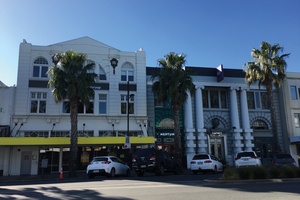
03. ca 1910–1914 – Gladstone Road Historic Area
9–37 Gladstone Road, by various (including Burr & Mirfield)
Gisborne’s main commercial thoroughfare, Gladstone Road, was developed from the early 1870s. The historic area comprises three buildings of similar scale erected just prior to World War I: the Eastern Co-op Building Society, National Bank and Thomas Adams Building. They are classical in design, with the National Bank being the most overtly Edwardian Baroque. The historic area recognises the collective significance of the buildings as a piece of period townscape. The Albion Club Hotel at 13–27 Gladstone Road has been demolished and replaced. See heritage.org.nz/the-list/details/7017
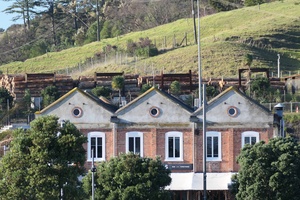
04. 1920 – Former Kaitī Freezing Works
41 The Esplanade, by Burr & Mirfield
This building is a fragment of the old Kaitī Freezing Works complex that grew additively from 1896 to fill almost the entire south-east side of the Tūranganui River, and was mostly demolished in the mid-1990s. The surviving structure is half of what was once a six-gabled wing. It is used as a restaurant, with brick walls and timber posts, beams and joists exposed internally, along with remnants of machinery and historic photographs. Next door is the Eastland Port Offices, refurbished by Architects 44 in 2020 using timber to reflect the logs that the port exports. It earned a local NZIA award for interior architecture in 2021.
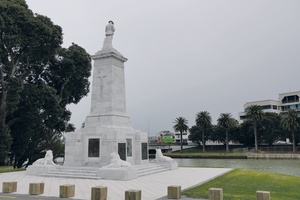
05. 1923 – Cenotaph
70 The Esplanade, by Edward A. Armstrong
Built as a memorial to the Gisborne soldiers who died during World War I, the Cenotaph now commemorates all local citizens who have died at war. It has a concrete shaft faced with white Carrara marble. Four reclining lions and the figure of a soldier were carved overseas. Edward Armstrong was the son of the City Engineer, C. E. Armstrong. He studied at the Architectural Association, and lived and worked in London and Burma, returning to New Zealand ca 1953. The Cenotaph has been conserved by Salmond Reed Architects. Across the road is Burr & Mirfield’s Kerridge House (1936), Gisborne’s best streamlined moderne house.
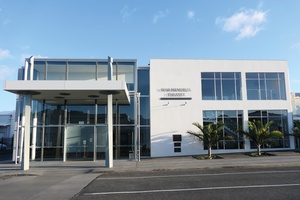
06. 1957 – War Memorial Hall/Theatre
159 Bright Street, by Glengarry, Glengarry and Corson
Built as a war memorial hall to commemorate those killed in World War II, this building originally comprised an auditorium, sometimes used as a dance hall, and supporting facilities. The auditorium was adapted for use as a theatre in 1975. Shand Shelton completed a major refurbishment of the facility in 2015. This project also included the glassy addition on the south-west side that accommodates a multi-purpose foyer and bar area. Sculpted poppies suspended from the ceiling continue the war memorial theme. The building earned a local NZIA award for public architecture in 2017.
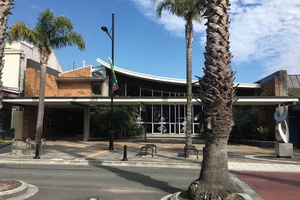
07. 1965–1967 – H. B. Williams Memorial Library
39 Peel Street, by Glengarry, Corson and Pilbrow in association with Edward A. Armstrong
This extruded building is dominated by a bold, curving roof in two parts: the larger one above the main book stacks and the smaller one above the service spaces. Clerestory glazing at the ridge ensures good daylighting. Raw concrete and brick are important externally and internally, in combination with the greens and creams that principal architect Colin Pilbrow took from nature. The Bright Street end of the building was extended to designs by Chow:Hill with Lardelli Arts (2019). The spatial experience is still one of the finest in Gisborne. The building won an NZIA Merit Award in 1970. See hbwilliamslibrarybuilding.wordpress.com/
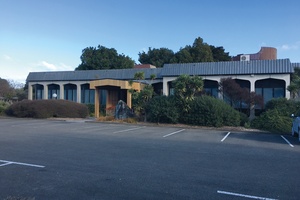
08. 1974–1976 – Mangatu Blocks Building
266–268 Childers Road, by Glengarry, Corson and Pilbrow
Mangatu Blocks Incorporation administers blocks of Māori land that are leased to farmers. The purpose-built building includes a top-lit, double-height meeting hall that is large enough to hold 250 shareholders and resembles a whare whakairo, with carvings, tukutuku and kōwhaiwhai. This is in contrast to the concrete exterior, with its 12 bays hovering above the ground on recessed foundations. Principal architect Jock Corson was reportedly disappointed that the builders got the floor level wrong, as the building does not hover as high as he had intended it to. The entry was altered in 2020.
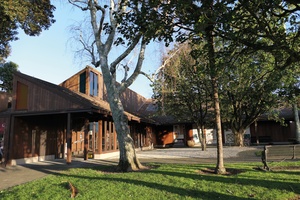
09. 1977 – Tairāwhiti Museum
10 Stout Street, by Colin Pilbrow
With its sloping roofs, half gables, timber construction and dark-stained exterior, the Tairāwhiti Museum building is in the regionalist tradition. A series of galleries takes the visitor south and west towards the Taruheru River, creating a journey that culminates in the two-storeyed wheelhouse and cabin of The Star of Canada, a 1909 cargo steamer that was wrecked in 1912 and was relocated to this site in the 1980s. Architects 44 made alterations to the museum entry in 2010. To the building’s east is the C Company Māori Battalion Memorial House, opened in 2014.
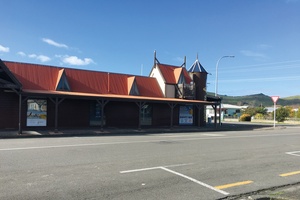
10. 1981 – De Lautour Road Shops
92 De Lautour Road, by Roger Walker
This two-storey building has a squat tower on the street corner, return verandahs and steeply pitched roofs with finials and gabled dormers. It was contemporaneous with Walker’s Vintage Homes initiative, with which he aimed to mass-produce contemporary reinterpretations of old timber cottages. The Gisborne building shares some details with some of the Vintage Homes, including triangular windows in the gabled dormers. The Turenne Street extension was designed by Graeme Nicoll in 1996 and continues the cottage language. Walker also designed the former Gas House, 426 Palmerston Road (1982).
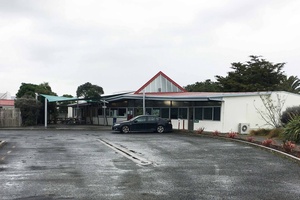
11. 1993–1994 – Te Whatukura, EIT
77 Cobden Street, by Rewi Thompson
Te Whatukura is home to Māori Studies at the Eastern Institute of Technology’s Tairāwhiti Campus. It was designed by Rewi Thompson (Ngāti Porou and Ngāti Raukawa), who maintained strong iwi connections. The slightly curved front façade sits under a broad, gabled roof. The other three exterior walls are understated, belying the interest generated internally, where a series of angled walls and windows made for a challenging build. In the foyer, visitors are greeted by a pou whakairo (free-standing carved figure), above which a glazed gable end provides both top-lighting and a view to the sky.
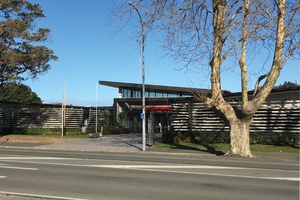
12. 2015–2018 – Awarua (Gisborne District Council Building)
15 Fitzherbert Street, by Chow:Hill with Lardelli Arts
The Gisborne District Council Building accommodates some 220 staff members in two wings bridged by a recessed entry and foyer area. It was conceptualised as a waka hourua (twin-hulled canoe). This explains the use of diagonal boards on the front elevation and the brises soleil on the side elevations, which add visual interest as well as providing shade. Tā moko artist, carver and designer Sir Derek Lardelli provided cultural advice and developed “design narratives” throughout. He also suggested the name Awarua (two waters). This project won a local NZIA award for commercial architecture in 2019.
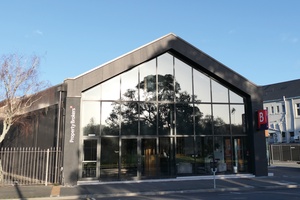
13. 2019 – Property Brokers Building
66 Reads Quay, by Architects 44
This project involved the strengthening and refurbishment of an old industrial building. The street façade is like a whare reinterpreted in steel and glass, minus the porch. Inside, old brick walls are contrasted with new steel columns and beams that sit directly under timber roof trusses, all complemented by new plywood partitions. A timber box on the north side accommodates a smaller tenancy. The project earned a local NZIA award for commercial architecture in 2020. To the immediate south is Guy Natusch’s Government Building (1959–1960). Natusch also designed the Government Life Building, 200 Gladstone Road (1960–1965).
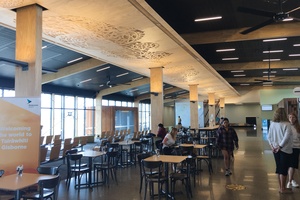
14. 2020 – Gisborne Airport Terminal
Aerodrome Road, by Tennent Brown in association with Architects 44
Remember when regional airport terminals all used to look the same? The new Gisborne terminal demonstrates the shift to communicating local specificity and cultural context. It combines clear planning strategies and low embodied energy materials with Māori elements, including a carved pare (lintel) at the main entrance and tāhuhu (ridge) resting on pou in the main space. Signage identifies it as “the most sustainable airport terminal in New Zealand”, with photovoltaic panels, rainwater collection and use, and some rammed-earth walls, among other things. The building won a local NZIA award for public architecture in 2021.
Other addresses
Te Poho o Rawiri Marae (ca 1930) – 18–24 Ranfurly Street, built under the leadership of Sir Āpirana Ngata.
Waikereru Ecosanctuary and 1769 Garden (since 2011) – 846 Riverside Road, by Jeremy Salmond and Dame Anne Salmond. Includes Sarosh Mulla’s Welcome Shelter (2015).
Toko Toru Tapu (1913) – 73 Whakato Road, Manutuke. A significant Māori church, conserved by Architects 44 (2000–2015). This project earned a national NZIA award for heritage architecture in 2016.
Tolaga Bay Wharf (1926–1929) – Wharf Road, Tolaga Bay, by Cyrus Williams. An unusually long wharf.
St Mary’s Church (1924–1926) – 1889 Te Araroa Road (SH35), Tikitiki. One of the best of Ngāti Porou’s carved interiors, led by Sir Āpirana Ngata to restore skills in traditional arts and crafts.
FIRMOGRAPHY
The continuum of Glengarry, Glengarry and Corson/Glengarry, Corson and Pilbrow/Corson Nicoll/Nicoll Architects/Nicoll Blackburne/Architects 44 has been the dominant local practice since its formation in 1951 by Monty Glengarry. He was joined by his brother Bruce almost immediately, by Jock Corson in 1952 and Cantabrian Colin Pilbrow in 1953. Draughtsman Derek Phillips later recalled that Monty was good at bringing the work in and Bruce looked after the finances (before moving into valuation from about 1970), while Corson and Pilbrow were both talented designers. Pilbrow oscillated between the firm and sole practice until 1979, when he left Gisborne. Graeme Nicoll joined the practice in 1980. Monty Glengarry and Jock Corson both died that decade and Nicoll took over the firm, joined in partnership by James Blackburne in 2000. Today, as Architects 44, Blackburne is in partnership with Daniel King and Rachael Spriggs. They hold much of the firm’s archive of drawings, dating back to the 1950s. Derek Phillips and Michael Parkin set up Gisborne Group Architects in 1999. Parkin ran it from 2001 to 2008, when he moved to Hawke’s Bay.

The itinerary series is supported by Dulux Colours of New Zealand. Dulux Colour Specialist Davina Harper has selected a Colours of New Zealand palette based on this itinerary. See the full range and order colour samples here.
Acknowledgements
Many thanks to James Blackburne and Sheridan Gundry for their help with this itinerary. As well as being a director at Architects 44, Blackburne is Chair of Historic Places Aotearoa and has a huge knowledge of Gisborne architecture. Gundry, too, has written at length about Gisborne history and heritage, including multiple books. In particular, my ‘Firmography’ draws from her work. See also the websites of the architects who have worked in Gisborne in recent years, of the various building owners, of Heritage New Zealand Pouhere Taonga for information on listed historic places, and of the NZIA for information on award winners. Back issues of the newspaper, Gisborne Photo News, published from 1954 to 1975, are a terrific resource, available at photonews.org.nz/gisborne/index.html









